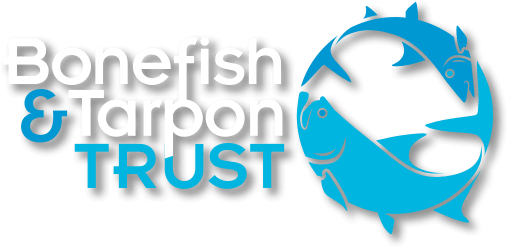Because the tarpon fishery is primarily catch and release, it’s long been thought that there were few threats to the tarpon population. But as we have learned more about tarpon over the past 15 years, it’s become clear that we need to be concerned about their juvenile habitats. Juvenile tarpon require mangrove swamps and backwaters for the first year or so of life – without protection from predators that swim in more open waters, juvenile tarpon won’t survive to their first birthday. Unfortunately, much of this mangrove habitat has been lost to coastal development. In an effort to correct some of this loss of critical habitat, BTT has launched the Juvenile Tarpon Habitat Initiative to identify and restore juvenile tarpon habitats. The first project in this Initiative is the Wildflower Preserve, in Placida, FL, not far from famous Boca Grande Pass. The goal of this project is to determine the effectiveness of habitat restoration by monitoring juvenile tarpon in the mangrove habitat before and after restoration.
Since October 2012, Bonefish and Tarpon Trust has been working with the Lemon Bay Conservancy to study the Wildflower Preserve juvenile tarpon population before undertaking a habitat restoration. The two-year research assessment will allow us to fully document the restoration’s effectiveness, and will help inform future restoration projects. As our first year of sampling comes to a close, we successfully captured 844 juvenile tarpon—154 of which were large enough to be tagged—in this single estuarine habitat.
Our objective is to study the Wildflower Preserve tarpon population to determine abundance, survival, growth rates, movement between the ponds and movement out of the system. We take a fin clip from each tarpon, which allows us to identify a recaptured fish without a tag by matching its genetic materials. Once we have results back from the FWC, we can draw more conclusions from recaptures.
To date, we have fifteen physical recaptures (caught in the net again) of the 154 previously tagged fish, and all but one were caught in the same pond where they were originally tagged. A 10 percent recapture rate is high for these types of studies (3-5 percent is more typical), which leads us to believe our population size is not substantial. Growth in the winter months seems to be stunted and it’s not unusual to see a fish with no growth between a January capture and February recapture. However, we have also seen fish that have grown up to four inches from February to September, showing that their growth can be substantial in warmer months.
Aside from physical recaptures, we also glean information from a stationary antenna located at the entrance to the Wildflower system. As each fish enters and exits the preserve, the computer attached to the antenna saves its unique tag number, along with the date and time. It appears that most of the tarpon are traveling in and out of the system at the same time. Although we are not entirely sure why, it could be due to cues such as temperature, time of day, or salinity. To better monitor these cues, we acquired a YSI Pro 2030 water probe donated by Percy and Marvin Angelo. We are also in the process of installing a second antenna at Wildflower Preserve that will give us more accurate movement data and provide more detail about the direction of tarpon movement patterns.
It has been a successful and informative year of sampling. Thank you to all of our project sponsors: True Flies, The Orvis Company, Mick and Kathy Aslin, The Lemon Bay Conservancy, The Vanderbilt Family Foundation and Sanibel Fly Fishers for their generous support.
The second year of sampling is scheduled to begin in November. If you are interested in becoming a project sponsor or volunteering to help with the sampling, please contact Bonefish and Tarpon Trust at info@bonefishtarpontrust.org



